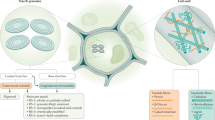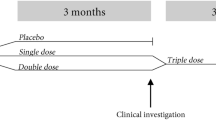Abstract
IN nineteenth century Britain, the main dietary sources of “fibre” were cereals, potatoes and, to a lesser extent, green vegetables and pulses. The widespread introduction of roller milling between 1877 and 1880, followed by the growth of the food processing industry and changes in technology, is often said to have resulted in a marked decrease in the amounts of cellulose and other forms of indigestible fibre or “roughage” in the national diet during the past 100 yr. Moreover, the continued ingestion of a low “fibre” diet has been linked with a variety of diseases which occur predominantly in economically-developed Western countries, and which have become more common in Britain during this century. These include appendicitis1, toxaemia of pregnancy1, diverticular disease, and cancer of the colon and rectum3–5, as well as changes in the levels of serum triglycerides and serum cholesterol6. Here I examine whether there has been a concomitant decline in the average “fibre” content of the British diet. This can only be assessed in terms of crude fibre which is an imprecise index of those carbohydrates in plant foods which are not digested by man.
This is a preview of subscription content, access via your institution
Access options
Subscribe to this journal
Receive 51 print issues and online access
$199.00 per year
only $3.90 per issue
Buy this article
- Purchase on Springer Link
- Instant access to full article PDF
Prices may be subject to local taxes which are calculated during checkout
Similar content being viewed by others
References
Rendle-Short, A. S., Brit. J. Surg., 8, 171 (1920).
Hipsley, E. H., Brit. Med. J., 2, 420 (1953).
Burkitt, D. P., Lancet, ii, 1229 (1969).
Burkitt, D. P., Cancer, 28(1), 3 (1971).
Painter, N. S., and Burkitt, D. P., Brit. Med. J., 2, 450 (1971).
Eastwood, M., Lancet, ii, 1222 (1969).
Horder, Dodds, E. C., and Moran, T., in Bread, 30 (Constable, London, 1954).
Drummond, J. C., and Wilbraham, A., The Englishman's Food (2nd ed. by Hollingsworth, D. F.) (Jonathan Cape, London, 1957).
Burnett, J., Plenty and Want (Thomas Nelson, London, 1966).
Barker, T. C., McKenzie, J. C., and Yudkin, J., Our Changing Fare (Macgibbon and Kee, London, 1966).
McCance, R. A., Lancet, ii, 205 (1955).
Accum, F., Treatise on the Art of Making Good and Wholesome Bread of Wheat, Oats, Rye and other Farinaceous Grain (Thomas Boys, 1821).
Lloyd, E. M. H., J. Agric. Econ. Soc., 4, 89 (1936).
Moir, H. C., in The Nation's Food (edit. by Bacharach, A. L., and Rendle, T.), 210 (Society of Chemical Industry, London, 1946).
Smith, E., The Food of the Poorer Labouring Classes in England, Sixth Report of the Medical Officer of the Privy Council, 1863. Appendix 6 [3416], HC 1864 XXVIII, 216.
Royal Society Committee, The Food Supply of the United Kingdom Cd. 8421 (HMSO, London, 1917).
Ministry of Agriculture, Fisheries and Food, Bd. Trade J., 183, i (1962).
Ministry of Agriculture, Fisheries and Food, Trade and Industry, 4, 90 (1971).
Levi, L., Bourne, S., Brittain, Hancock, Jevons, and Fellows, F. P., Report of the Fifty-first Meeting of the British Association for the Advancement of Science, 272 (John Murray, London, 1882).
Watt, B. C., and Merrill, A. L., Composition of Foods: Agriculture Handbook No. 8 (Agricultural Research Service, United States Department of Agriculture, Washington, DC, 1963).
Food and Agriculture Organization, Food Composition Tables for International Use (FAO Nutritional Studies No. 3, Washington, 1949).
Platt, B. S., Tables of Representative Values of Foods Commonly Used in Tropical Countries (Med. Res. Counc. Spec. Rep. Ser. No. 302, HMSO, London, 1962).
Kent-Jones, D. W., and Amos, A. J., Modern Cereal Chemistry, 9 (1967).
Fraser, J. R., and Holmes, D. C., J. Sci. Food Agric., 7, 589 (1956).
Nature, 149, 460 (1942).
Nature, 150, 538 (1942).
Nature, 151, 629 (1943).
Nature, 154, 582 (1944).
Nature, 154, 788 (1944).
Author information
Authors and Affiliations
Rights and permissions
About this article
Cite this article
ROBERTSON, J. Changes in the Fibre Content of the British Diet. Nature 238, 290–292 (1972). https://doi.org/10.1038/238290a0
Received:
Revised:
Issue Date:
DOI: https://doi.org/10.1038/238290a0
Comments
By submitting a comment you agree to abide by our Terms and Community Guidelines. If you find something abusive or that does not comply with our terms or guidelines please flag it as inappropriate.



